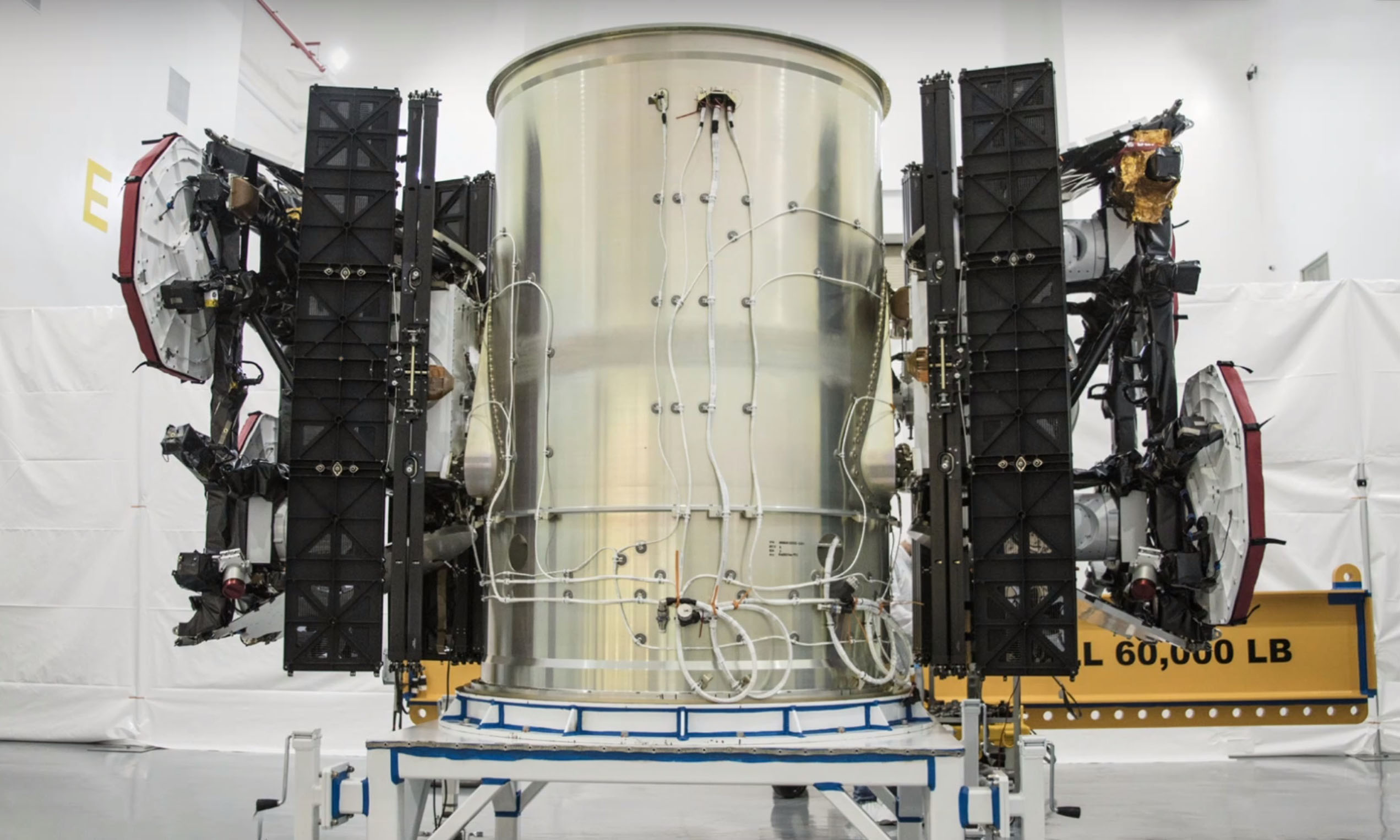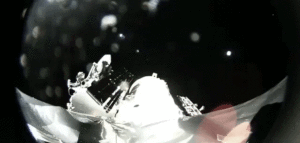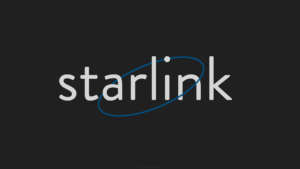

News
SpaceX’s Starlink eyed by US military as co. raises $500-750M for development
In a reasonably predictable turn of events, SpaceX has been awarded a healthy $28.7M contract to study, develop, and test possible military applications of its prospective Starlink internet satellite constellation.
Previously reported by Teslarati in August 2018, FCC applications related to Starlink revealed that SpaceX had plans to develop and test Starlink interconnectivity with conformal antenna arrays installed on aircraft, all but directly pointing to military involvement with a reference to the need for aerial maneuvers “[representative] of a high-performance aircraft.”
The Air Force just gave @SpaceX $28.7 million for Starlink experimentation. https://t.co/fr2bBHJkDN
— Eric Berger (@SciGuySpace) December 21, 2018
Around the same time as those FCC documents surfaced, the US Air Force Research Laboratory (AFRL) spoke with AviationWeek about plans to experiment with the potential capabilities offered by a flurry of proposed low Earth orbit (LEO) internet satellite constellations, including the likes of SpaceX’s Starlink, OneWeb, a Telesat network, and others. While no specific companies were fingered in AFRL’s public statements, it was far too convenient to be a coincidence. Four months later, the below transaction was published in the Department of Defense’s running list of new contract awards:
“[SpaceX], Hawthorne, California, has been awarded a $28,713,994 competitive, firm-fixed-price … agreement for experimentation … in the areas of establishing connectivity [and] operational experimentation … [and] will include connectivity demonstrations to Air Force ground sites and aircraft for experimental purposes. For the proposed Phase 2, the awardee proposes to perform experiments [with] early versions of a commercial space-to-space data relay service and mobile connectivity directly from space to aircraft.” – Department of Defense, FBO FA8650-17-S-9300
Those dots were fairly easy to connect earlier this year, but this agreement confirms the apparent arrangement with certainty. Almost three months after SpaceX could have received its initial funding, it’s possible that the company has already begun basic testing along the described lines with the two prototype Starlink satellites currently in orbit, although no FCC or FAA filings (that I am aware of) have suggested that those tests are ongoing. SpaceX may be waiting for the launch of a second generation of Starlink prototype satellites to begin seriously putting its antenna and communications technologies through their mid-air paces.
SpaceX seeks approval for Starlink internet tests on high-performance govt. planes https://t.co/FSUFgFXOQW
— TESLARATI (@Teslarati) August 15, 2018
Early answers to the biggest question
At this point in time, the viability and potential utility of Starlink and other large LEO constellations are well established. What has not been established, however, is how exactly any of the proposed constellations – especially Starlink – can go from paper to orbit. In other words, the reasonable question to ask of any company pursuing such an endeavor is how they plan to fund the acquisition of capital-intensive manufacturing infrastructure and launch services.
Ultimately, SpaceX will receive $19.1M of the full $28.7M sum from the DoD in FY2019 (Oct 1, 2018 to Sept 30, 2019). This absolutely dwarfs all other contracts awarded thus far under the AFRL’s Defense Experimentation Using Commercial Space Internet (DEUCSI) program, which began in August 2017 and has since awarded $2.5M and $5.6M contracts to Iridium and L3, respectively. In the grand scheme of things, ~$30M is a pittance in the face of the extensive investments SpaceX needs to make if it hopes to mass-produce high-performance satellites at a truly unprecedented scale.
- An unofficial analysis of SpaceX’s first ~1600 Starlink satellites. (Mark Handley)
- One of the first two prototype Starlink satellites separates from Falcon 9’s upper stage, February 2018. (SpaceX)
- SpaceX’s Starlink satellite constellation efforts could provide the company with valuable experience that can be applied around Mars. (unofficial logo by Eric Ralph)
This is where a duo of major investment and fundraising developments come into play. In the last several months, word has gotten out that SpaceX secured a respectable $250M loan through the sale of debt, and more recently wrapped up an equity investment round to the tune of $500M, playing off of long-time investors with a demonstrated interest in belief in the company’s long-term vision. For unknown reasons, SpaceX had originally looked into raising the full $750M through a debt-equity loan, but – despite reports that its market was very healthy – soon cut the offering to $500M and eventually $250M, which it ultimately secured in November. Combined with a traditional $500M equity-investment uncovered earlier this month, SpaceX appears to have nearly completed fundraising of more than $750M in the second half of 2018 alone.
.@WSJ reports that @SpaceX is raising $500M to get its #Starlink broadband satellite service off the ground: https://t.co/dQTKE10NpB H/T @RolfeWinkler pic.twitter.com/ufx02xNWLv
— Alan Boyle 👽 (@b0yle) December 18, 2018
Put a different way, SpaceX has very rapidly gotten very serious about doubling down on Starlink. According to the Wall Street Journal, who originally broke the news of a new $500M equity round, that funding is to be predominately focused on getting Starlink up and running as a serious venture capable of mass-producing satellites. According to a recent Reuters analysis of the Starlink program, CEO Elon Musk challenged the company to begin dedicated launches of operational Starlink satellites as early as June 2019, and the company also plans to launch another round of improved (Gen 2) satellite prototypes early next year.
For prompt updates, on-the-ground perspectives, and unique glimpses of SpaceX’s rocket recovery fleet check out our brand new LaunchPad and LandingZone newsletters!
Elon Musk
Tesla Supercharger Diner food menu gets a sneak peek as construction closes out
What are you ordering at the Tesla Diner?

The Tesla Supercharger Diner in Los Angeles is nearing completion as construction appears to be winding down significantly. However, the more minor details, such as what the company will serve at its 50s-style diner for food, are starting to be revealed.
Tesla’s Supercharger Diner is set to open soon, seven years after CEO Elon Musk first drafted the idea in a post on X in 2018. Musk has largely come through on most of what he envisioned for the project: the diner, the massive movie screens, and the intended vibe are all present, thanks to the aerial and ground footage shared on social media.
We already know the Diner will be open 24/7, based on decals placed on the front door of the restaurant that were shared earlier this week. We assume that Tesla Optimus will come into play for these long and uninterrupted hours.
The Tesla Diner is basically finished—here’s what it looks like
As far as the food, Tesla does have an email also printed on the front door of the Diner, but we did not receive any response back (yet) about what cuisine it will be offering. We figured it would be nothing fancy and it would be typical diner staples: burgers, fries, wings, milkshakes, etc.
According to pictures taken by @Tesla_lighting_, which were shared by Not a Tesla App, the food will be just that: quick and affordable meals that diners do well. It’s nothing crazy, just typical staples you’d find at any diner, just with a Tesla twist:
Tesla Diner food:
• Burgers
• Fries
• Chicken Wings
• Hot Dogs
• Hand-spun milkshakes
• And more https://t.co/kzFf20YZQq pic.twitter.com/aRv02TzouY— Sawyer Merritt (@SawyerMerritt) July 17, 2025
As the food menu is finalized, we will be sure to share any details Tesla provides, including a full list of what will be served and its prices.
Additionally, the entire property appears to be nearing its final construction stages, and it seems it may even be nearing completion. The movie screens are already up and showing videos of things like SpaceX launches.
There are many cars already using the Superchargers at the restaurant, and employees inside the facility look to be putting the finishing touches on the interior.
🚨 Boots on the ground at the Tesla Diner:
— TESLARATI (@Teslarati) July 17, 2025
It’s almost reminiscent of a Tesla version of a Buc-ee’s, a southern staple convenience store that offers much more than a traditional gas station. Of course, Tesla’s version is futuristic and more catered to the company’s image, but the idea is the same.
It’s a one-stop shop for anything you’d need to recharge as a Tesla owner. Los Angeles building permits have not yet revealed the date for the restaurant’s initial operation, but Tesla may have its eye on a target date that will likely be announced during next week’s Earnings Call.
News
Tesla’s longer Model Y did not scale back requests for this vehicle type from fans
Tesla fans are happy with the new Model Y, but they’re still vocal about the need for something else.

Tesla launched a slightly longer version of the Model Y all-electric crossover in China, and with it being extremely likely that the vehicle will make its way to other markets, including the United States, fans are still looking for something more.
The new Model Y L in China boasts a slightly larger wheelbase than its original version, giving slightly more interior room with a sixth seat, thanks to a third row.
Tesla exec hints at useful and potentially killer Model Y L feature
Tesla has said throughout the past year that it would focus on developing its affordable, compact models, which were set to begin production in the first half of the year. The company has not indicated whether it met that timeline or not, but many are hoping to see unveilings of those designs potentially during the Q3 earnings call.
However, the modifications to the Model Y, which have not yet been officially announced for any markets outside of China, still don’t seem to be what owners and fans are looking forward to. Instead, they are hoping for something larger.
A few months ago, I reported on the overall consensus within the Tesla community that the company needs a full-size SUV, minivan, or even a cargo van that would be ideal for camping or business use.
Tesla is missing one type of vehicle in its lineup and fans want it fast
That mentality still seems very present amongst fans and owners, who state that a full-size SUV with enough seating for a larger family, more capability in terms of cargo space for camping or business operation, and something to compete with gas cars like the Chevrolet Tahoe, Ford Expedition, or electric ones like the Volkswagen ID.BUZZ.
We asked the question on X, and Tesla fans were nearly unanimously in support of a larger SUV or minivan-type vehicle for the company’s lineup:
🚨 More and more people are *still* saying that, despite this new, longer Model Y, Tesla still needs a true three-row SUV
Do you agree? https://t.co/QmbRDcCE08 pic.twitter.com/p6m5zB4sDZ
— TESLARATI (@Teslarati) July 16, 2025
Here’s what some of the respondents said:
100% agree, we need a larger vehicle.
Our model Y is quickly getting too small for our family of 5 as the kids grow. A slightly longer Y with an extra seat is nice but it’s not enough if you’re looking to take it on road trips/vacations/ kids sports gear etc.
Unfortunately we…
— Anthony Hunter (@_LiarsDice_) July 17, 2025
Had to buy a Kia Carnival Hybrid because Tesla doesn’t have a true 3 row vehicle with proper space and respectable range. pic.twitter.com/pzwFyHU8Gi
— Neil, like the astronaut (@Neileeyo) July 17, 2025
Agreed! I’m not sure who created this but I liked it enough to save it. pic.twitter.com/Sof5nMehjS
— 🦉Wise Words of Wisdom – Inspirational Quotes (IQ) (@WiseWordsIQ) July 16, 2025
Tesla is certainly aware that many of its owners would like the company to develop something larger that competes with the large SUVs on the market.
However, it has not stated that anything like that is in the current plans for future vehicles, as it has made a concerted effort to develop Robotaxi alongside the affordable, compact models that it claims are in development.
It has already unveiled the Robovan, a people-mover that can seat up to 20 passengers in a lounge-like interior.
The Robovan will be completely driverless, so it’s unlikely we will see it before the release of a fully autonomous Full Self-Driving suite from Tesla.
Energy
Tesla launches first Virtual Power Plant in UK – get paid to use solar
Tesla has launched its first-ever Virtual Power Plant program in the United Kingdom.

Tesla has launched its first-ever Virtual Power Plant program in the United Kingdom. This feature enables users of solar panels and energy storage systems to sell their excess energy back to the grid.
Tesla is utilizing Octopus Energy, a British renewable energy company that operates in multiple markets, including the UK, France, Germany, Italy, Spain, Australia, Japan, New Zealand, and the United States, as the provider for the VPP launch in the region.
The company states that those who enroll in the program can earn up to £300 per month.
Tesla has operated several VPP programs worldwide, most notably in California, Texas, Connecticut, and the U.S. territory of Puerto Rico. This is not the first time Tesla has operated a VPP outside the United States, as there are programs in Australia, Japan, and New Zealand.
This is its first in the UK:
Our first VPP in the UK
You can get paid to share your energy – store excess energy in your Powerwall & sell it back to the grid
You’re making £££ and the community is powered by clean energy
Win-win pic.twitter.com/evhMtJpgy1
— Tesla UK (@tesla_uk) July 17, 2025
Tesla is not the only company that is working with Octopus Energy in the UK for the VPP, as it joins SolarEdge, GivEnergy, and Enphase as other companies that utilize the Octopus platform for their project operations.
It has been six years since Tesla launched its first VPP, as it started its first in Australia back in 2019. In 2024, Tesla paid out over $10 million to those participating in the program.
Participating in the VPP program that Tesla offers not only provides enrolled individuals with the opportunity to earn money, but it also contributes to grid stabilization by supporting local energy grids.
-

 Elon Musk1 day ago
Elon Musk1 day agoWaymo responds to Tesla’s Robotaxi expansion in Austin with bold statement
-

 News1 day ago
News1 day agoTesla exec hints at useful and potentially killer Model Y L feature
-

 Elon Musk2 days ago
Elon Musk2 days agoElon Musk reveals SpaceX’s target for Starship’s 10th launch
-

 Elon Musk3 days ago
Elon Musk3 days agoTesla ups Robotaxi fare price to another comical figure with service area expansion
-

 News1 day ago
News1 day agoTesla’s longer Model Y did not scale back requests for this vehicle type from fans
-

 News1 day ago
News1 day ago“Worthy of respect:” Six-seat Model Y L acknowledged by Tesla China’s biggest rivals
-

 News2 days ago
News2 days agoFirst glimpse of Tesla Model Y with six seats and extended wheelbase
-

 Elon Musk2 days ago
Elon Musk2 days agoElon Musk confirms Tesla is already rolling out a new feature for in-car Grok



















